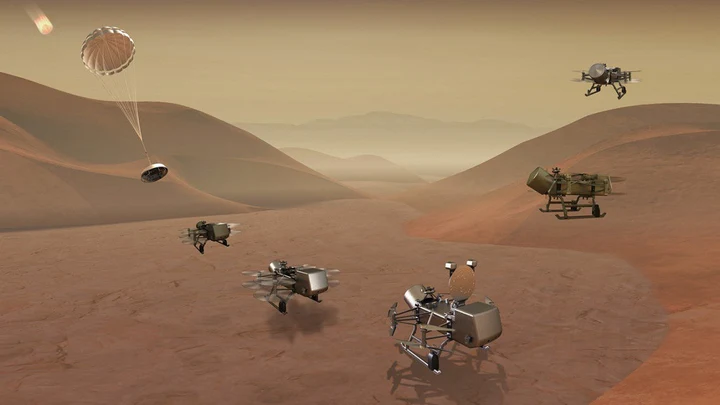
The scientific objectives of the upcoming Dragonfly mission to explore Saturn’s moon Titan are described in a new research paper, along with the instruments required to fulfil these goals. With launch expected around 2027, Dragonfly should take to Titan’s skies at some point in the mid-2030s.
https://iopscience.iop.org/article/10.3847/PSJ/abfdcf/pdf
Science Goals and Objectives for the Dragonfly Titan Rotorcraft Relocatable Lander.
“potential chemical biosignatures from both water-based “life as we know it” and potential “life, but not as we know it” that might use liquid hydrocarbons as a solvent”.
“Titan is unique among ocean worlds in that carbon, water, and energy interact on the surface. Complex, tholin-like organic compounds cover most of the surface. Titan’s profusion of organic riches, especially when exposed to transient liquid water, has created a potentially habitable environment”.
“Dragonfly vehicle is a single half-ton X8 octocopter. We spend nearly all of our time on the ground doing science and uplinking data, only flying for around half an hour to a new landing site once every 2 Titan days (32 Earth days).
At what point does organic chemistry become prebiotic chemistry?
How are solid materials, especially organics, transported on Titan’s surface and in its atmosphere?

“Identification of a full suite of organics, including those most relevant to biology, requires a dedicated surface mission, Dragonfly … determine the abundance and distribution of carbon, hydrogen, nitrogen, oxygen, and possibly phosphorous and sulfur (known collectively as CHNOPS) … amino acids, lipids, and sugars … More than just an energy source, sugars also form the backbone of RNA and DNA.”
“Goal B: Methane Cycle … atmospheric methane … stored liquid methane … history of atmospheric methane”.
